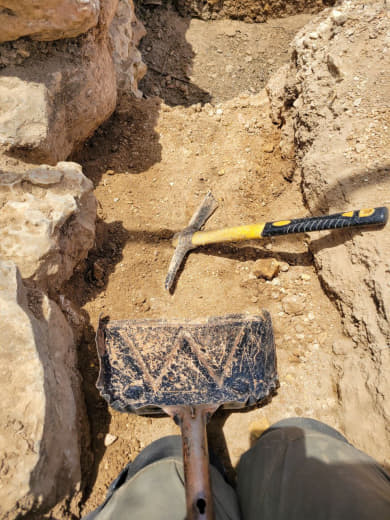On Thursday, May 23, Andrew, Ruby and George flew to Israel via Athens, Greece. Ruby will be helping on a kibbutz for a few days; Andrew and George are volunteering at an archeological dig at Shiloh. They were there before, in 2023.
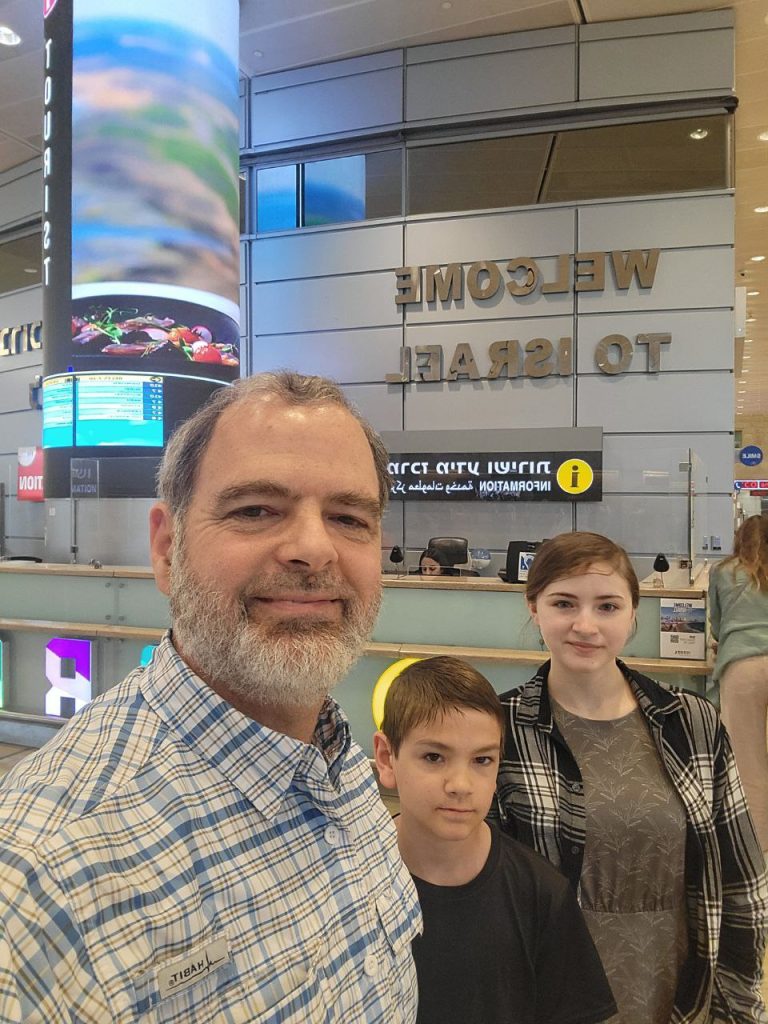
Arriving at Ben Gurion Airport. We had the weekend free to visit friends and explore Jerusalem before going to Shiloh.
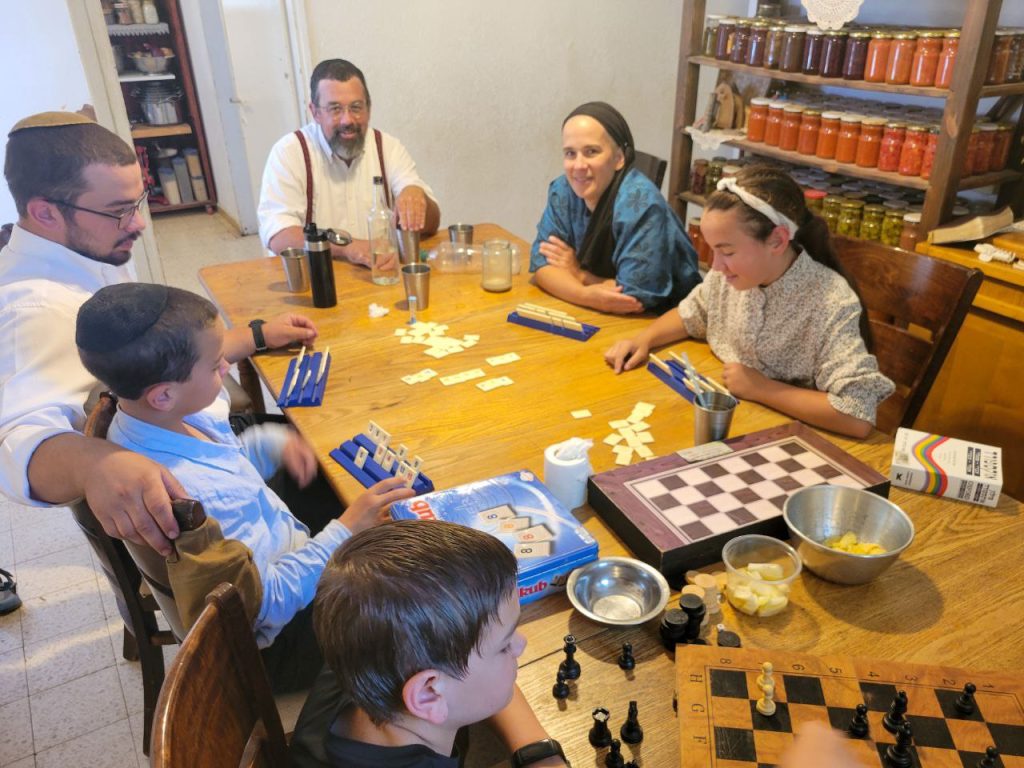
We visited Jonathan and Charlene Hollinger Friday evening and Saturday. We plan to visit them with our tour group in October.
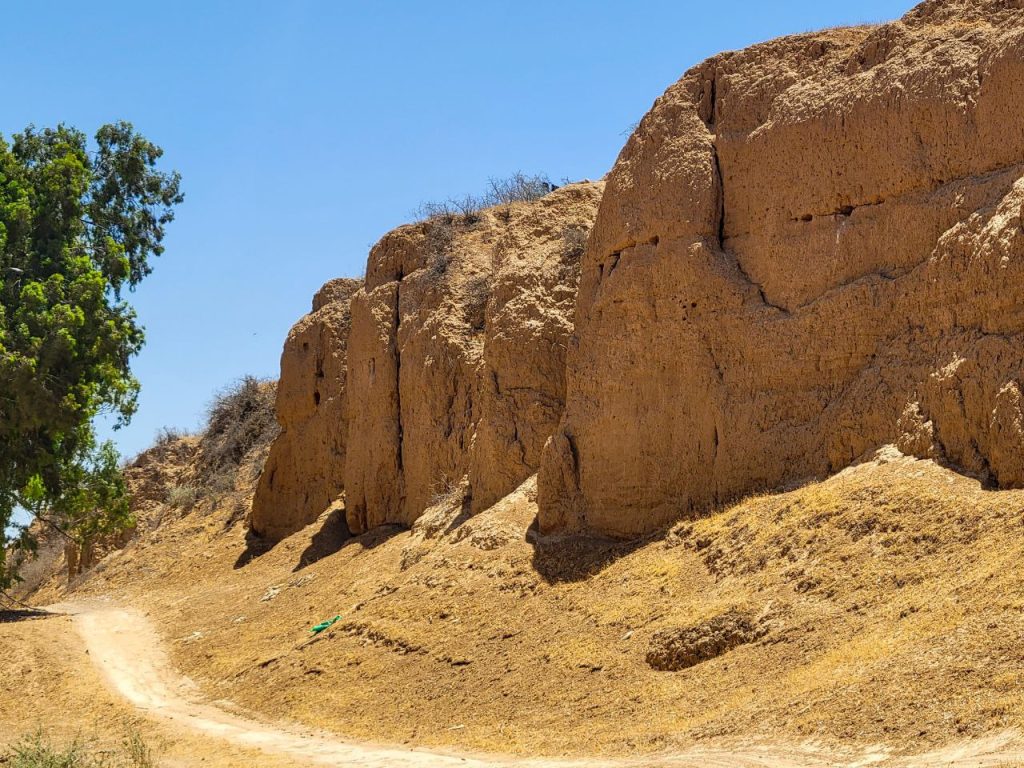
We’re in Abraham’s neighborhood. We wonder what the climate and land were like. He must have had more rainfall than today. The layer with the holes is a softer sand that birds can nest in.
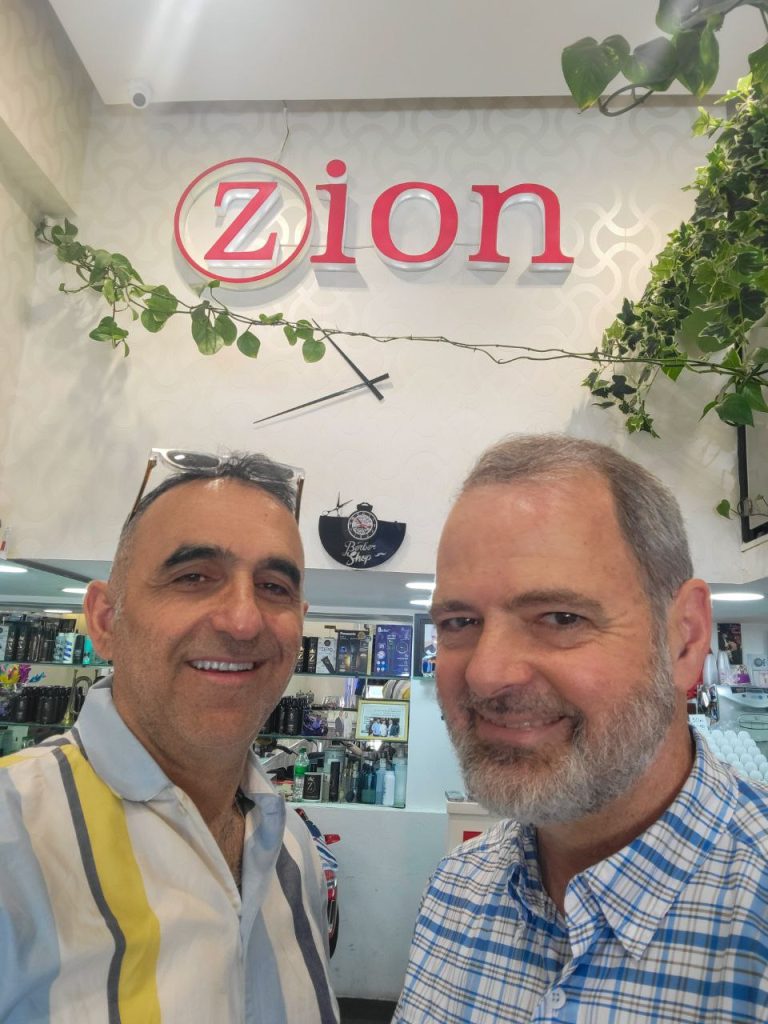
Zion (his name) gave me a trim. Then offered to take us to the yeshiva. He said they have 10,000 students, including from America.
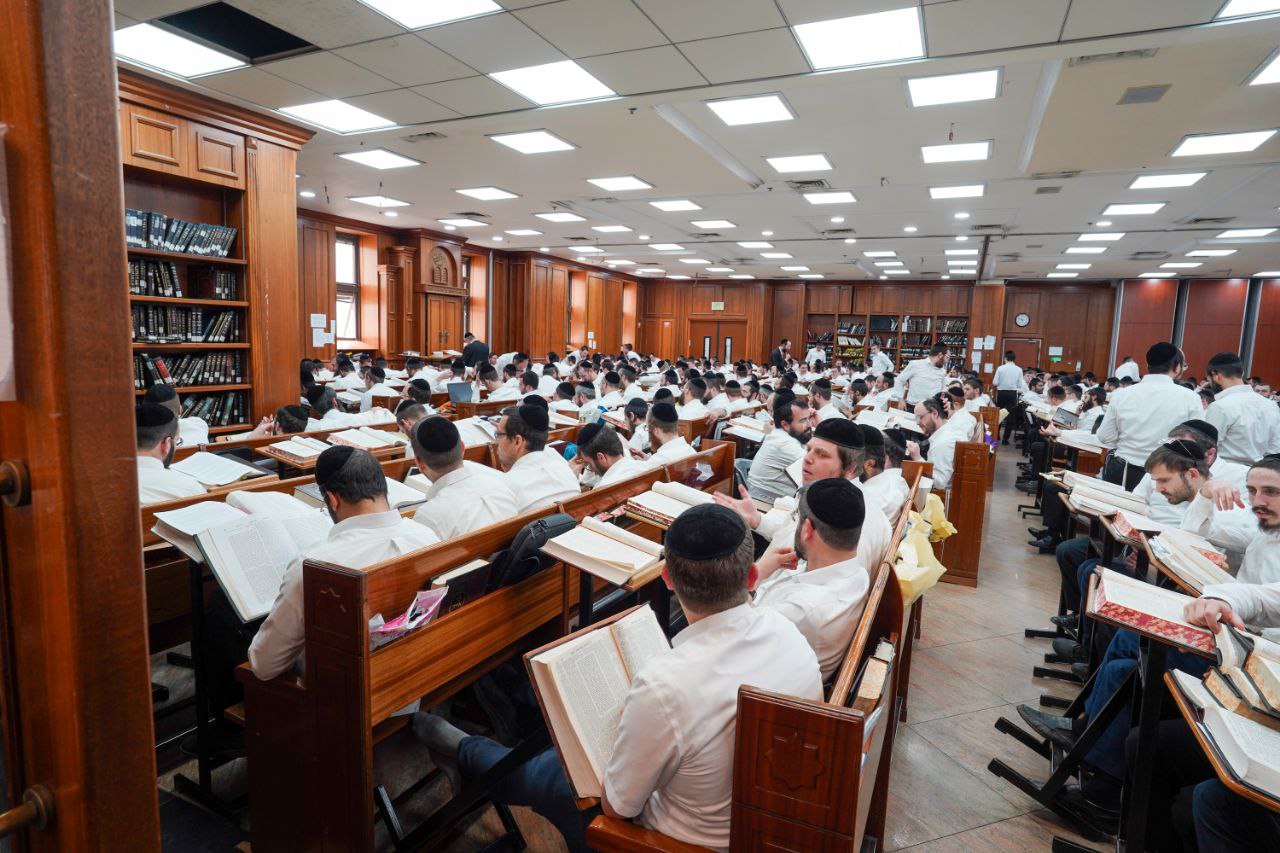
The yeshiva consists of multiple buildings here in the Haredi section of Jerusalem. They study out loud in small groups. The room was quite noisy, to me.
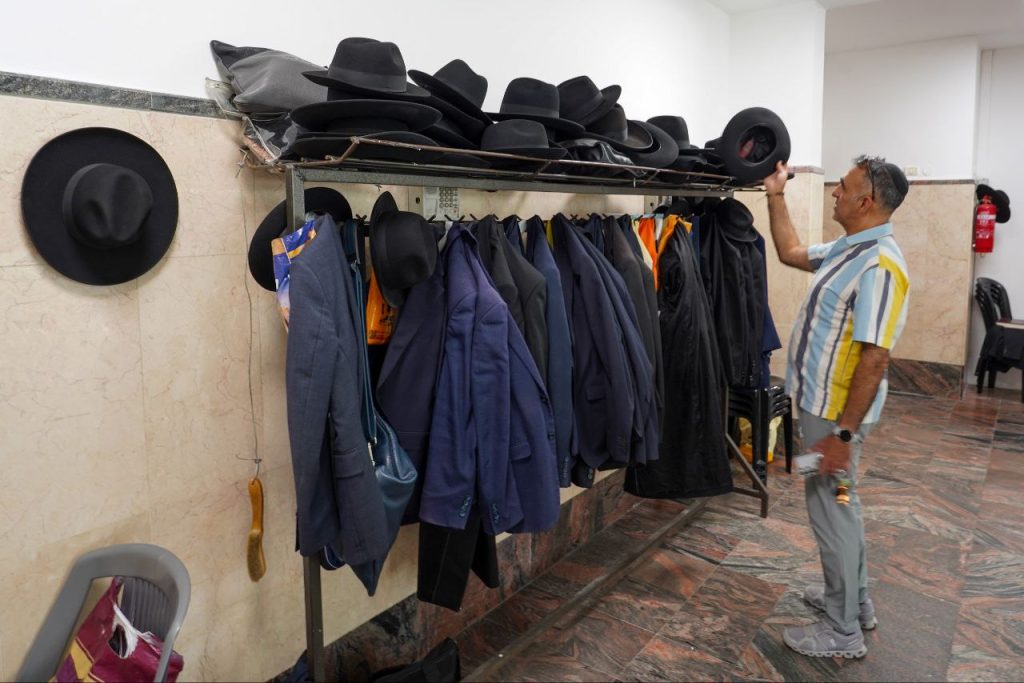
Zion says they can recognize their hats and don’t need names in them.
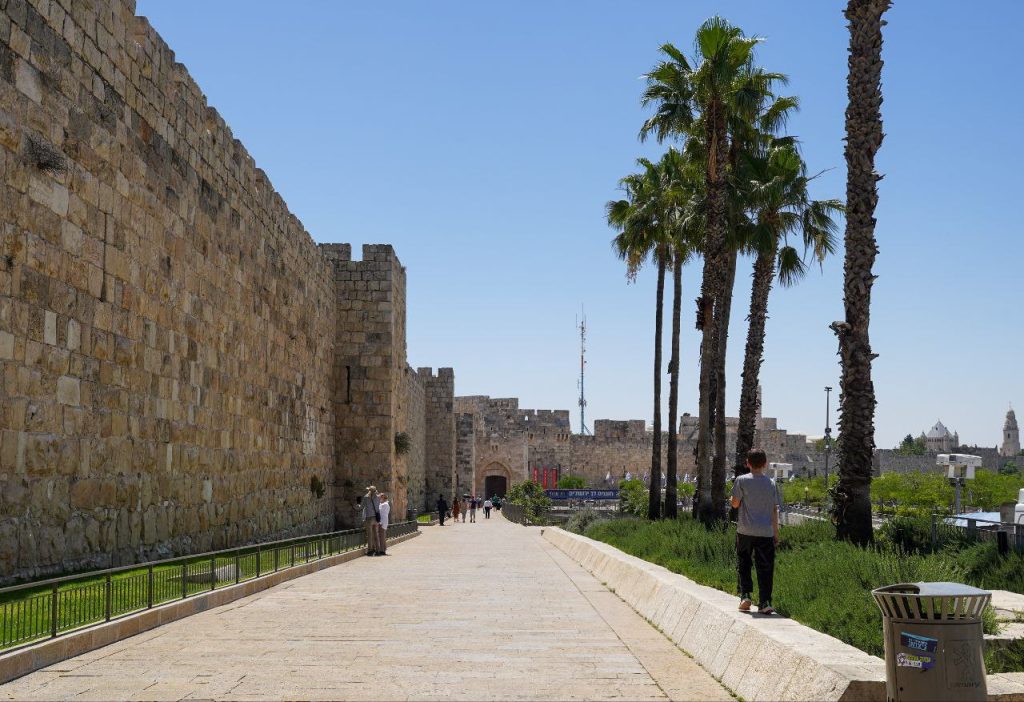
Walking toward Jaffa Gate to enter the Old City.
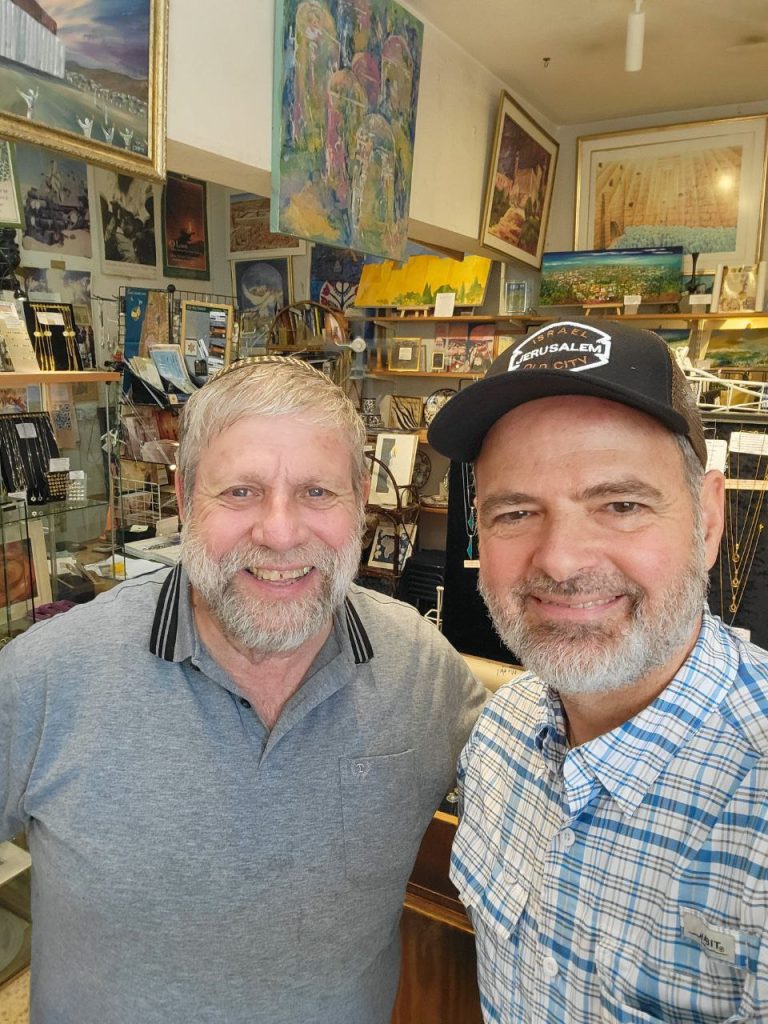
Visited Moshe at his Shorashim Shop,
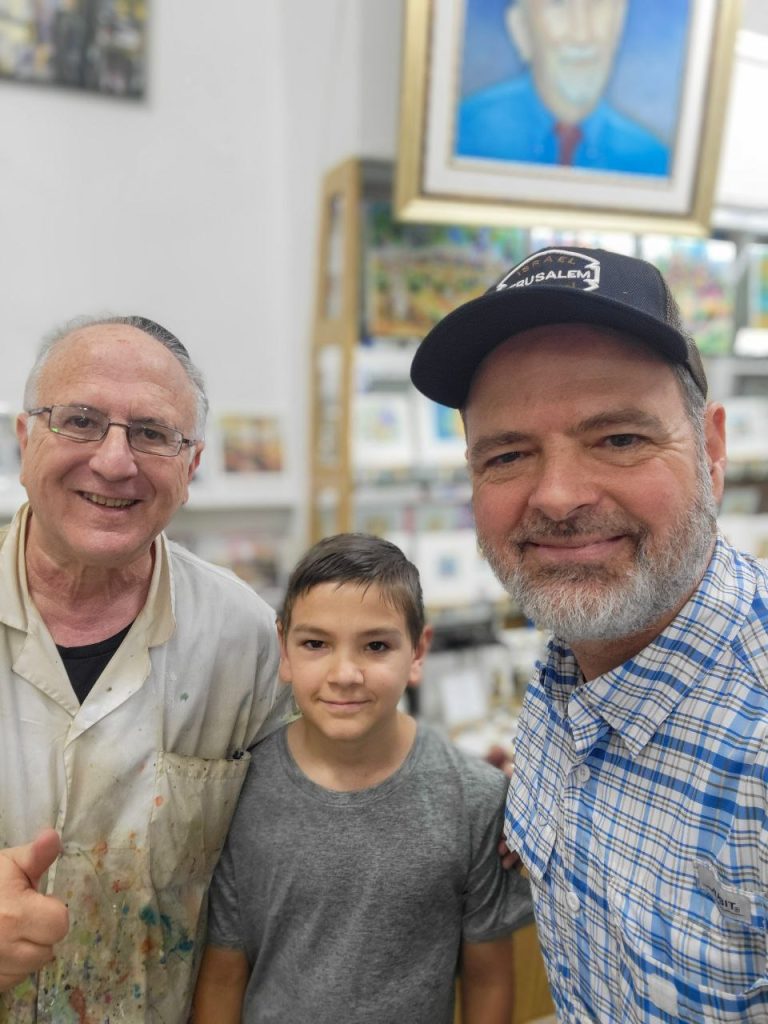
and Udi at his studio.

Breakfast, then ready for the day.
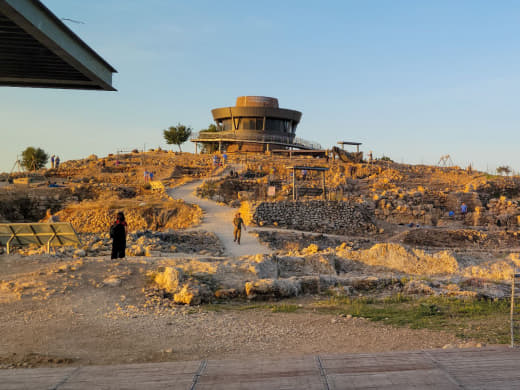
We’re at Shiloh ready for orientation.
“Archeology does not change the Biblical text; Archeology illuminates the Biblical text.” – Dr Scott Striplin
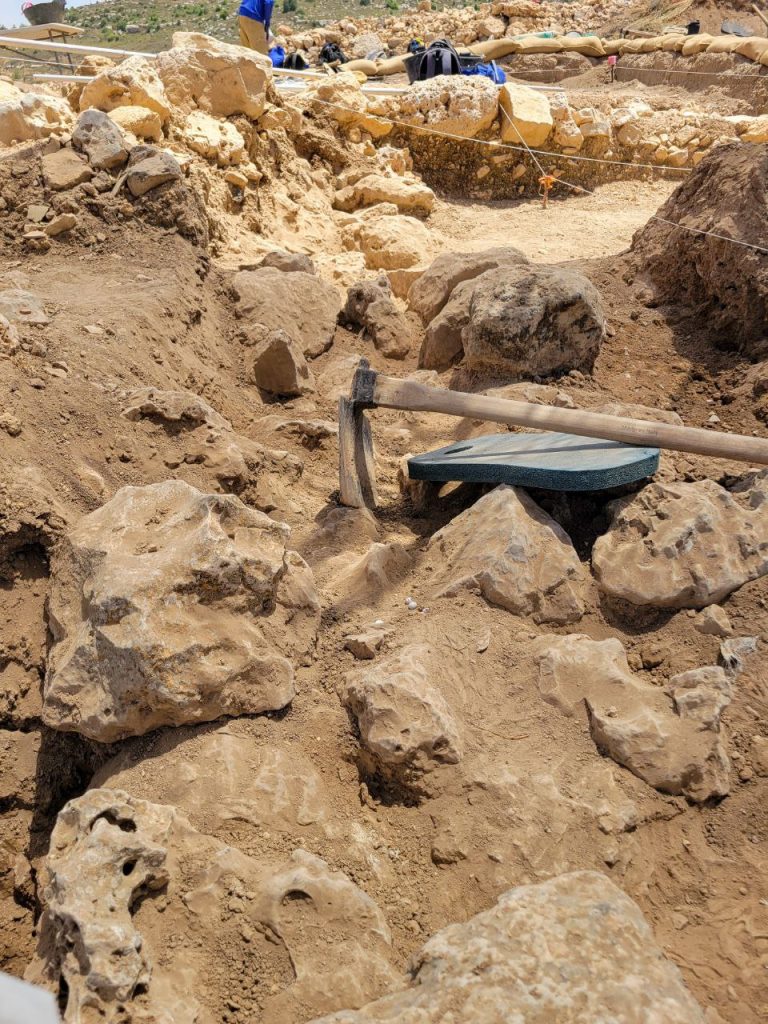
I’ve been assigned to work on a wall of the “monumental building.” We expect the building is the stone structure that was built to house the tabernacle. The tabernacle was at Shiloh for more than three centuries. If current analysis is correct, the wall we’re excavating is the northern wall of the holy place. Ellen Jackson, with her metal detector, visited our area three times today. On her first visit she found a coin where I was excavating.
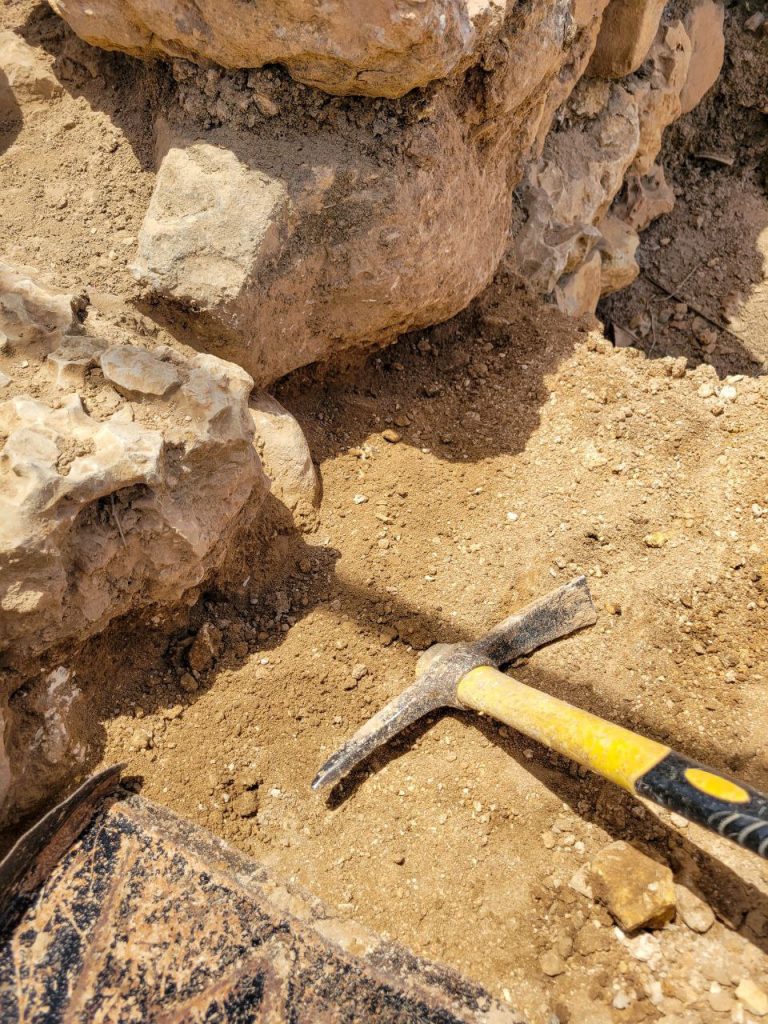
I’m digging a trench along the wall to expose a couple of courses of stone to confirm it is part of the building. I’m below the first course. We work slowly and carefully to recover any artifacts. We found a good bit of pottery inside the building and very little outside.
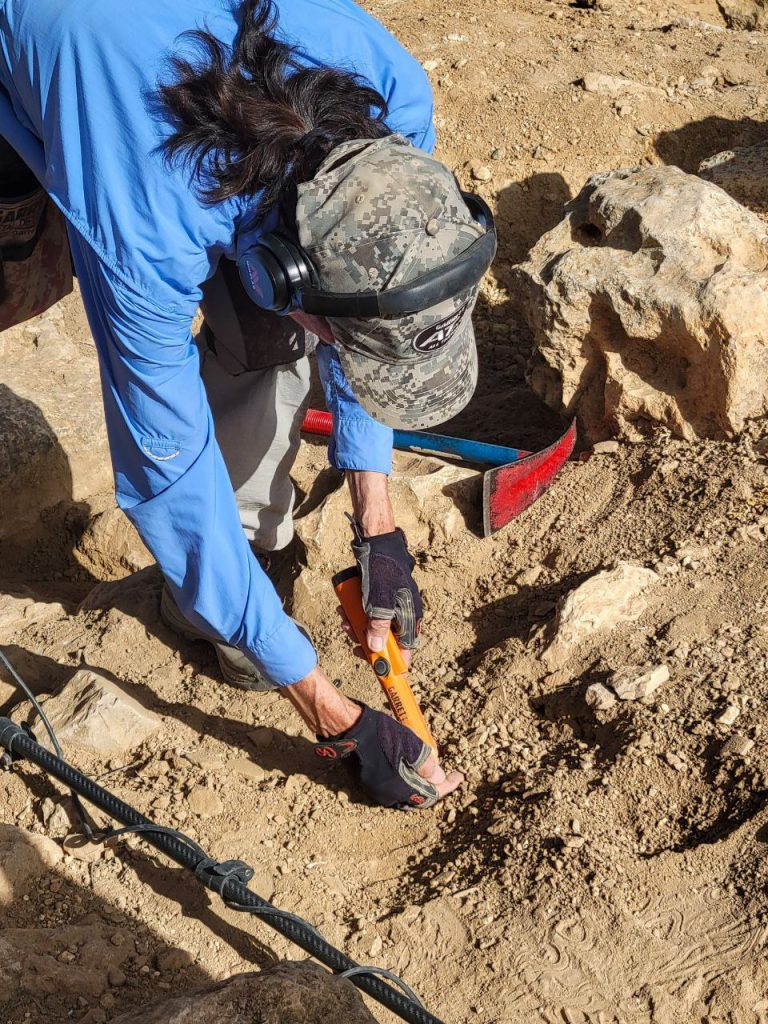
Ellen zeroing in on an object. We record the elevation where it was found.
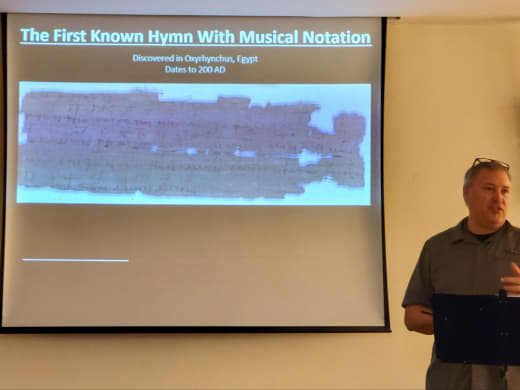
Archeological music. The oldest known preserved hymn with musical notation. It dates to 200 AD, found in northern Africa. It is trinitarian, naming Father, Son, and Holy Spirit. We sang it (in English).
Tuesday, MAY 27
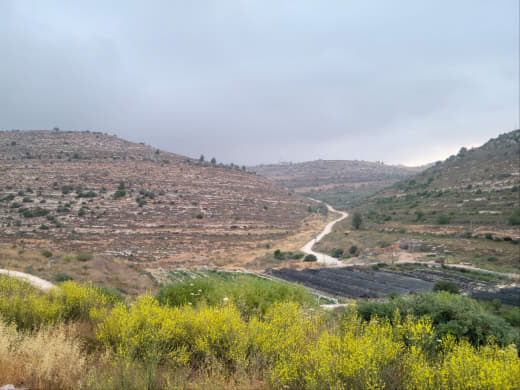
Today started out cloudy, and was generally much cooler than yesterday’s 96 degrees.
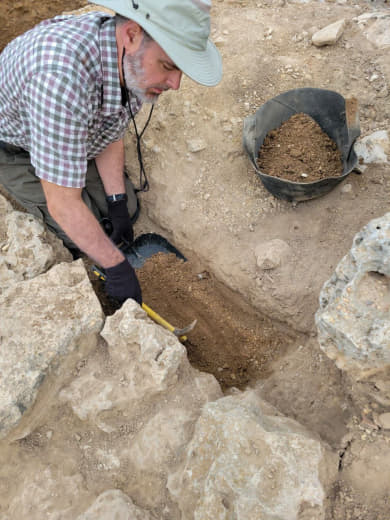
I finished out the section of wall I was clearing yesterday.
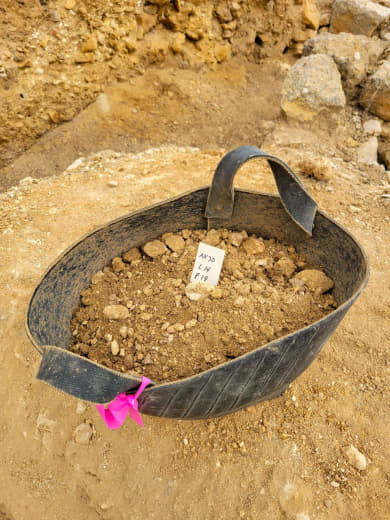
Each “gufa” of soil that goes to the sifting station is labeled with the square number, locus, and pail number. The floppy buckets are called gufas. Archeology tools in Israel are generally referred to by Arabic terms.
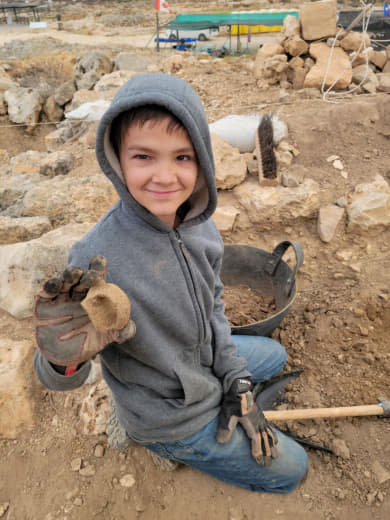
George found a nice pottery handle.
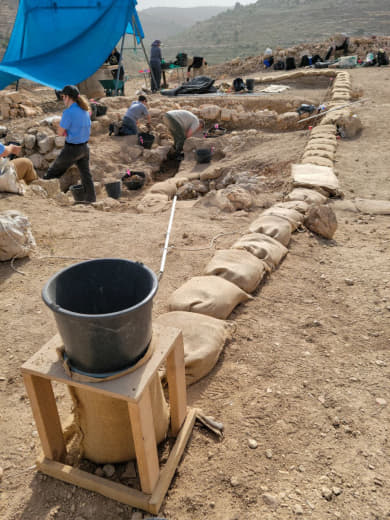
Sand bags are used to delineate and protect the squares. I did some sand bag replacements today.
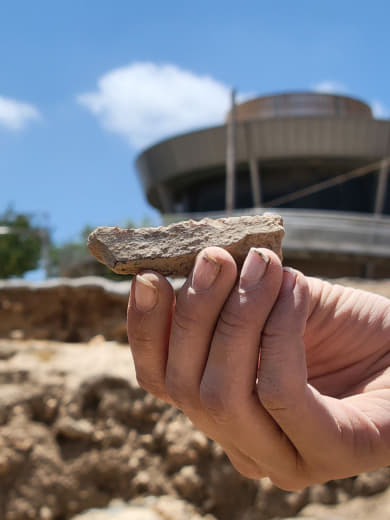
Our team found a flint blade in dry sifting.
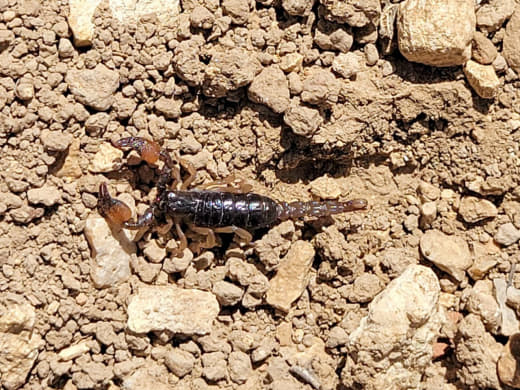
I found a cute little scorpion.
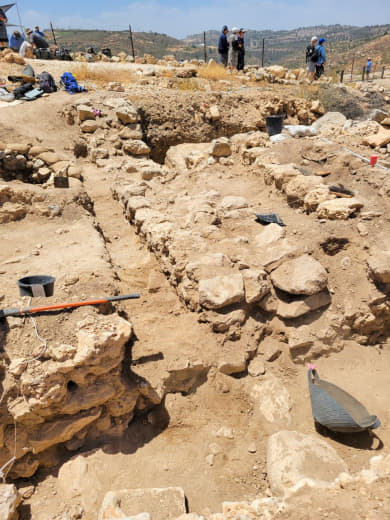
There’s a Roman era wall intersecting our more ancient wall. We’re trying to clarify what is original wall, and ultimately find the northeast corner of the monumental building. I hope we find it this week. Otherwise, I won’t be there for the discovery.
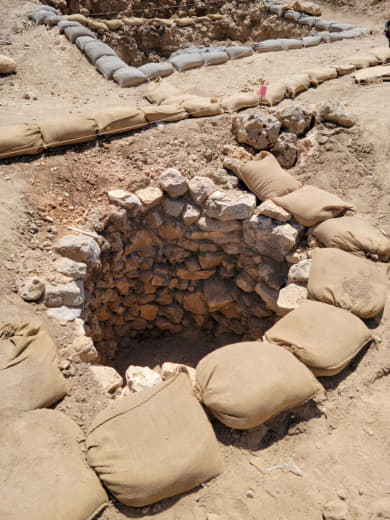
Roman era Jews built these storage silos inside the ancient building site. The builders were apparently oblivious of the historical significance of the site. I guess we’d call the storage pits “Shiloh silos” or “silos of Shiloh.”
